Anatoly Slyusar: "The period of the EU computer allowed us to train system and application programmers"

Anatoly Slyusar began his career working on the EC-1022 computer in the computer center of the Leningrad Regional Committee of the CPSU (Leningrad branch of the Research Institute of Automatic Equipment, later - LF Research Institute "Voskhod"). In an interview, he recalls how the programmers of the 1980–1990s worked and gives an estimate of a single series. According to Anatoly Vladimirovich, it was on these machines that the first mass generation of Russian programmers grew up and the successful experience of localizing foreign software was acquired.
- I was interested in mathematics in my school years. In the 38th School of Physics and Mathematics, which shared the laurels of the best in Leningrad with the “thirty”, there were very good teachers. There were no questions where to go further - either to the mathematician or to the Physics Department of the Leningrad State University. I chose matmeh.
At first, I was not interested in computer technology. I was engaged in mathematical analysis and seemed to be going to graduate school. But in the fifth year I got to practice at the computer center, and I liked everything. I agreed with them like this: you pay me a lab assistant's salary, and I’ll come to you for distribution. It turned out that I feel good, and the office did not lose.
- That is, your acquaintance with computer technology actually took place already in the computer center itself?
')
- Yes. He came to practice, but it turned out that this is a job for life.
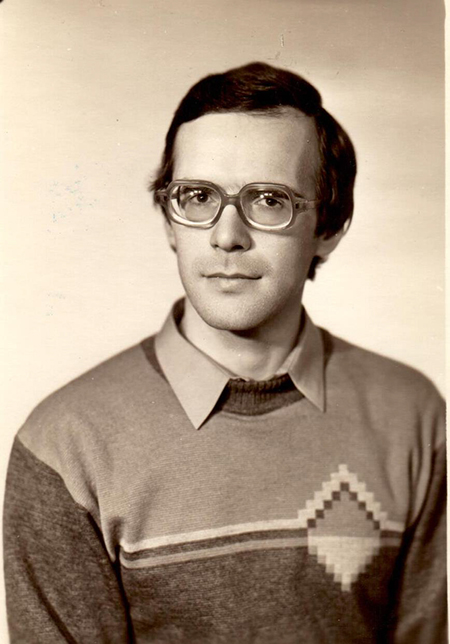
Anatoly Vladimirovich Slyusar, the end of the 1970s
Computing center of the party committee
- The computing center in question solved problems for the Leningrad regional party committee. It was equipped very well. By the time I went to work (I graduated from LSU in 1978), the EU-1022 was already working there. It is clear that the first time I was not allowed into the computer room. In Soviet times, machine time was worth more than the time of programmers and other employees and was strictly divided between directions. The electronic engineers, those who tuned the iron, usually did it closer to the night. System programmers were engaged in setting up the operating system in the evenings. The working day itself was divided between programmer departments. There were many departments, programmers too, but the machine worked in single-user mode. Therefore, at each particular moment she was engaged in one person. Machine time was strictly distributed among experienced staff - 10-15 minutes each, and beginners worked only at the table in the room.
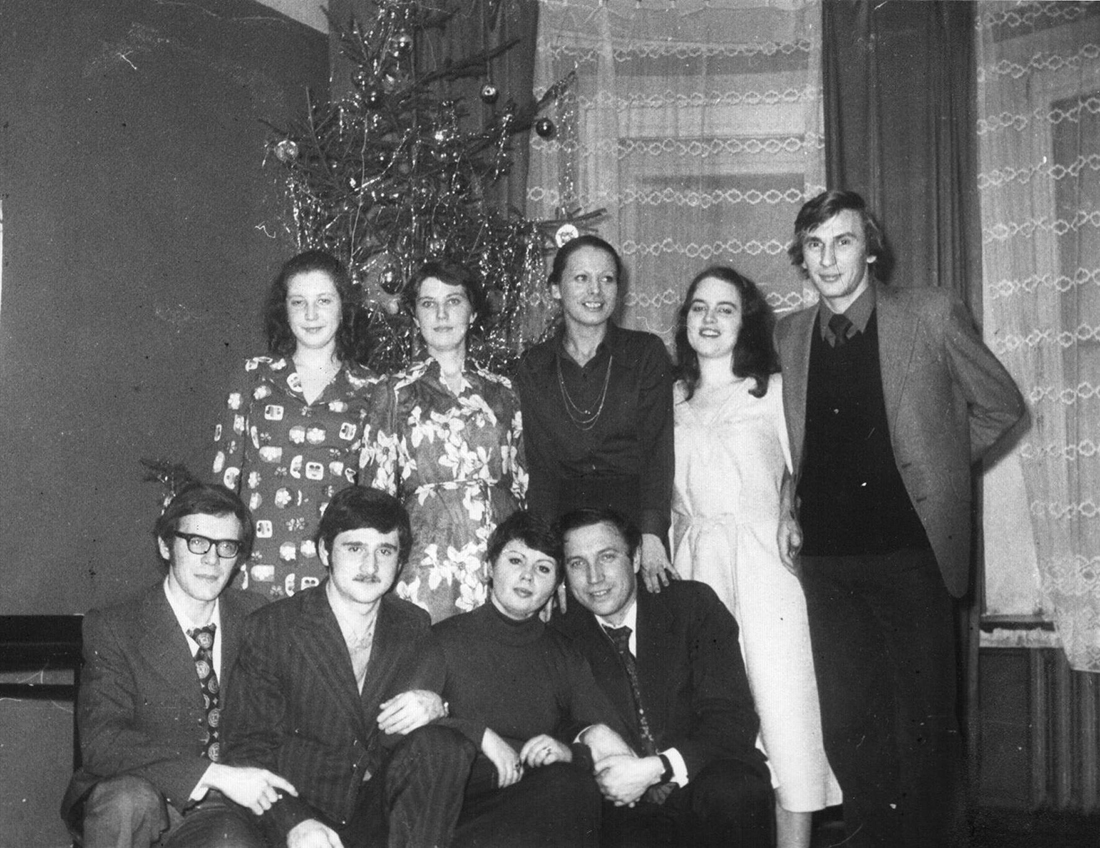
Programmers LF Research Institute "Sunrise", 1980
- How did you program?
- Now it's hard to imagine. You sit, write the program on paper. You draw flowcharts, in parallel you draw up some documentation. Having written the program, you start to debug it on paper, going through the text many times, correcting, complementing, changing. Finally she is ready to debug by car.
There were no input devices familiar to us now. It was possible to enter the program either from punched cards, or from punched tapes. We practically did not work with punched tapes, because they are quite gentle, and it is inconvenient to correct the program code on them. An already fully debugged program could be recorded on a punched tape. I did this later when we programmed for numerical control machines.
Self input punched tape in the car - a fascinating sight. The device reads it quickly enough, and at the output it begins to fit beautifully in the basket - like the girls from rhythmic gymnastics.
But that was later, and when I first arrived, we stuffed punch cards. Standard punched card, 80 positions. Accordingly, no more than 80 characters per line. At first I wrote in PL / I, then, when the tasks changed, I started working more in Assembler.

St. Petersburg, Moskovsky Prospect, 108. Here in the building of the former almshouse of Chubykinskaya there was a computer center of the Leningrad Regional Committee of the CPSU. Now he is in music school.
- How were the programs packed?
- On a special device. It was very noisy, stood in a separate room. Each line of the program was typed on a separate punch card. Since the symbols that were pierced were not printed from above, the punched card codes of each symbol had to be memorized - otherwise one would not find an error. If the punched card error is small, we sealed these holes and interrupted. But, of course, often had to re-interrupt the entire punched card.
Imagine: a program of 500 lines, a large deck of punch cards. God forbid her, stuffed, accidentally scattered. Then do not collect. We had masters who knew how to read punch cards, and in the end everyone had to learn how to do it in order to sort correctly. Even if you numbered a deck, the numbering changes when you change the algorithm, rearrange the blocks ...
- When the program was full, did it start debugging?
- Yes. You come to the computer room, insert the deck into the card reader, it is “chukh-chukh-chukh” - it is read and, if there are no reading errors, the processing starts. On the EU, the computer was a job management language (JCL - Job Control Language), which allowed to issue a compiler call for the entered program. The second stage is to connect other called system or application programs to your program. In modern terms, specify the libraries of the connected programs, after which the executable code starts to work.
The EU computer had a console - a typewriter such that allowed to manage the process, entering commands and answering questions from the system. And the main result was output to the ADC - alphanumeric printing device. You cannot call it a printer, because there were only alphanumeric characters. The result was obtained on folding paper that was perforated on both sides, then they went to figure out what we did.

The alphanumeric printing device EC-7033 was part of the BESM-6 computer and the EU computer
The paper was folded on the back of the ADC, it was necessary to correct it - it did not always fit in a pack - and the accumulated static electricity jerked so well. Later, grounded metal chains appeared that lay along the paper.
These alphanumeric printers were very limited in pictorial terms, but there were craftsmen who were able to print, say, Mona Lisa, using symbols. When viewed from a distance, it looked very believable.
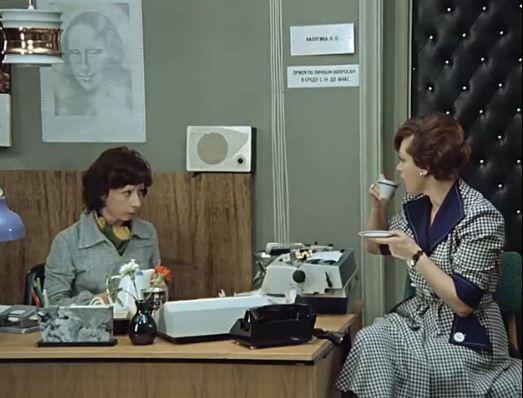
Behind the heroine Lia Akhedzhakova one of these reproductions. "Office Romance", 1977
- In your center were such specialists?
- No, but we communicated with other organizations. The exchange of information took place through magnetic tapes. They were either large — they were usually supplied with operating system distributions or compilers for PL / 1, COBOL, FORTRAN, or smaller coils. Of course, we used small exchanges. They could be tucked under the pants and taken out of the organization to exchange information with someone. We exchanged both these pictures and books. Printed novels Strugatsky, poems Vysotsky, Okudzhava, Galich. By saving paper, everyone could print out for themselves what he is interested in reading. Samizdat, of course, was strictly punished, but this did not stop anyone.
- What tasks were set before you?
- Since the computer center oversaw the regional committee of the party, the tasks were solved for them. Elections, registration of communists in Leningrad, holding meetings ... We even had a remote workplace. In the regional committee there was a telegraph apparatus, while the EC computer had an interface for interacting via telegraph channels with this remote terminal. That is, we could bring there some important indicators, and from there to take some commands. It was necessary to maintain the computing center itself: its economic activities, staff salaries, personnel records.
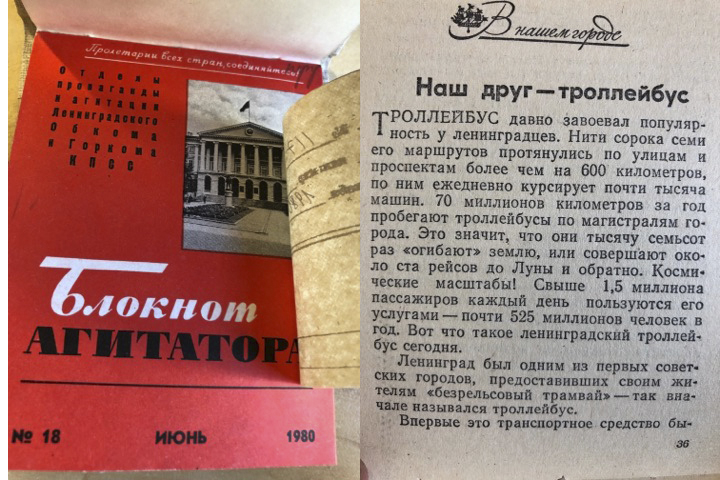
Statistics The Communist Party Committee used, including, for campaigning
EU-1022
- You are the first time to practice in the computer center. Come in the machine room. What did you think of it?
- Delight! The room is clean, bright, spacious. Cabinets with tape drives, disk drives. Raised floor is quite high, because under it lay air ducts, cables - interface and electric.
The car was located on the third floor - the highest. By the way, wherever I worked, they tried to raise it higher. I think it's because of the rodents. The higher you place it, the less likely the equipment will be damaged by any mice.
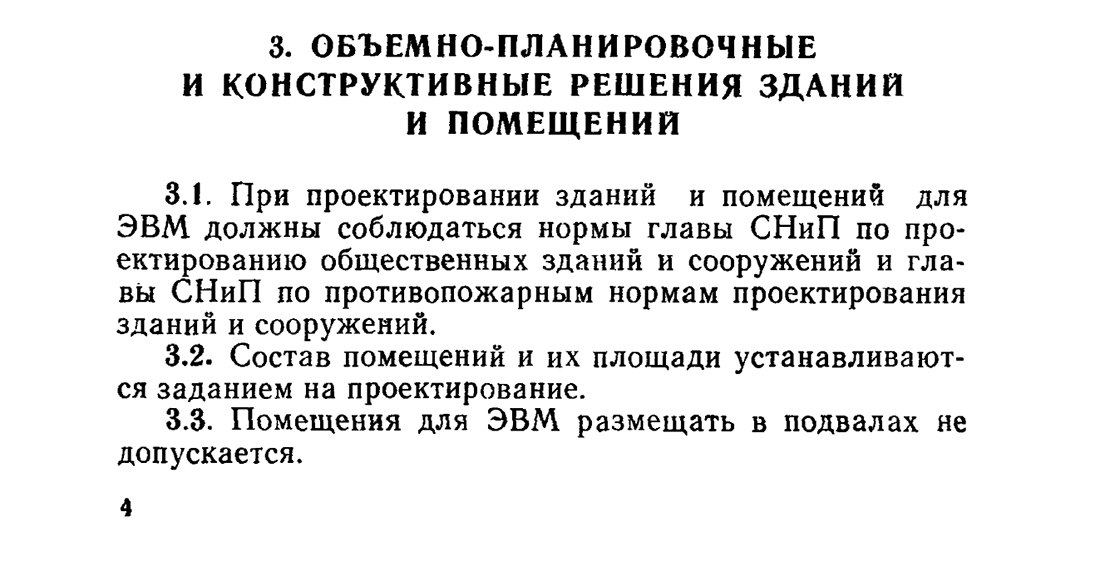
Excerpt from the "Instructions for the design of buildings and premises for electronic computers" , 1979
We enjoyed working. The presence of the console also helped. Older machines had to press a lot of buttons on the remote, and here, roughly speaking, only “start” and “pause”. Commands were entered already from the console. Then we got the first display complexes.
- EU-1022 - the basic model. For the needs of the computer center, its power is enough?
- Yes, although, for example, she had only 256 kilobytes of RAM. Modern programmers, of course, do not understand how you can write a fairly serious program that will work with such a small amount. The first discs were seven MB each, with small plates. Then came the large 29 MB hard disk drives. They weighed more than six pounds. Such a disk had to be lifted, put on the spindle ...
Tape mechanisms, like the tapes themselves, turned out to be long-lived. Even the following IBM models — AS / 400 — could work with them. Tapes were regularly rewound, because they stored static electricity during storage. If you do not twist for a long time, then it can fail. Well, the load on the tape drive mechanism was such that the nodes had to be cleaned with alcohol. Alcohol then issued a good - a three-liter jar per quarter. Electronic engineers received it, but we could be present!
King dadon
- The computing center team was very good. About a hundred people - many young people, people of older generations are also interesting. We organized joint events, constantly went out of town.
A large team was from electronics engineers - there specialists were required for different devices. Someone was engaged in the tape drive mechanisms. Someone - memory, processor, card readers, which are often clogged. System programmers were engaged in updating the operating system and system software. Well, most of all were applied programmers - about 30 people. The department heads received tasks and distributed them among subordinates. We did programs, which then had to be combined, combined. There were also small programs that were developed, brought to the final result and handed over by one person.
- How was the admission to the machine room?
- By a special badge in the pass, which was very similar to a horse. In Soviet organizations, the level of access to different premises was determined by badges. But it did not always help. Your job on the machine could be interrupted, for example, by the system analysts, if they urgently needed something. Once I even composed a song on this topic:
I have to skip a horse
Grab quickly a stack of punched cards.
According to my schedule,
The staff look enviously.
But Dadon reigns in the car.
And the display is leaning,
“Well, maybe I’ll be lucky tomorrow,” -
I thought, returning to the place.
Dadon is the surname of the chief of the systems engineers.
Correct period
- How long have you worked in the obkom center?
- Four years. Then, after his head, he moved to the VNPO "Vector" of the USSR Ministry of Radio Industry. There was an EU-1033, but I was already working more as a system programmer. I took the car, put an operating system on it, the distribution kit of which was supplied in source codes in assembler. When installing the operating system, it was necessary to first perform the translation of most of the programs, and then it was configured for a specific configuration of the EC computer: for its peripheral devices, memory sizes. And here on these source texts of the programs received from IBM through NIREVT (the research center of electronic computing equipment), we learned to program.

St. Petersburg, Kantemirovskaya Street, 10. The building of the VNPO "Vector"
- In your opinion, is the introduction of an EU-based computer the right direction for the development of electronic computing technology in the USSR?
- It seems to me correct. Before the advent of the EU computer in the USSR there were a lot of all kinds of cars. They do not dock with each other, either in data storage methods or in algorithms. The exchange of programs was difficult with such a variety. We could develop our own, but then we would have fallen further and further behind. Here we received samples of technology. It is clear that because of the embargo on the supply of ready-made machines, they had to be assembled in the USSR. But no one forbade us to buy components. IBM architecture and operating system did not patent, they could also be bought, processed, used. There was a single architecture, scalability, more powerful processors, more memory. They were all compatible - by operating system, by data storage methods, by software. I think this was the right period of our development, which allowed us to step forward and train system and application programmers - they adopted the programming experience that was already in America.
- Echoes of "accept - not accept the EU" from the 1960s reached you?
- I was young then and, of course, did not think about it. When I came to the computer center, the EU computer already started working there. “Minsk-32” stood nearby, and there was no doubt that it was necessary to transfer everything that had been accumulated and accumulated on it, to the EU. And that this car is better than that, too, was obvious.
- Besides the operating system distribution, did you have to work with American programs?
- Not. Application software was all his. Probably, the systems for managing some productions could be taken from the Americans as a model, but our tasks were quite specific. This is the center of the regional committee. Therefore, I got acquainted with the originals only of the operating system, compilers from programming languages.
Other computers
- What was after LNPO "Vector"?
- I went back to where I started. They were already called the Scientific Research Institute of Software, and it was possible to solve more interesting problems that were not tied to the Regional Committee. In particular, I was developing a debugger for specialized operating systems for EC-based computers. EC-1033 was produced in the version for ships. Operating systems were installed on the ship’s machines, which managed the entire economy of the ship, perhaps, firing, or something else. They had to be developed and debugged. I created the debugger of these systems.
In the process of debugging, it was necessary to interpret the execution of each command, and with good speed. When the result was obtained, I, besides debugging the operating system, ran through this program, for example, the PL / 1 compiler. I understood the principles of the compiler, which allowed us to optimize the resulting code in terms of volume and speed of work.

Programmers SRI Software, 1987
It was an interesting job, and we did it for a Moscow organization. I often had to go to Moscow, take, receive assignments. But as soon as we finished this development, the negative consequences of restructuring began to be felt, and within literally two years (1988–1989) everything began to be curtailed. Funding has declined sharply, no one knew what to do, and much of what has been accumulated has begun to disappear.
Then, when personal computers appeared, they remembered the legacy of the EU computers and made emulators for the execution of its programs. The same Pentium -166 perfectly emulated the EU-1033 and carried out its programs with the same speed.
- When in your field of view began to appear other computers?
- In the late 1980s. I was already working part-time in the cooperative. Despite the fact that it was the main work, we took orders for the development of programs for other computers. When the cooperative bought personal computers, I met them. True, they no longer programmed. Organized the operation of some programs, prepared the data. Then from the cooperative I got into the Industrial and Construction Bank (St. Petersburg). There we bought AS / 400, and we had personal computers just like workstations connected with this machine. I took up the organization of the operation and the same system work on the AS / 400 - installing the operating system, the programs that we purchased. We bought the German system for the automation of banking, but it did not go well. I had to redo everything and develop my system on AS / 400. Then the bank bought finished products from the developers.
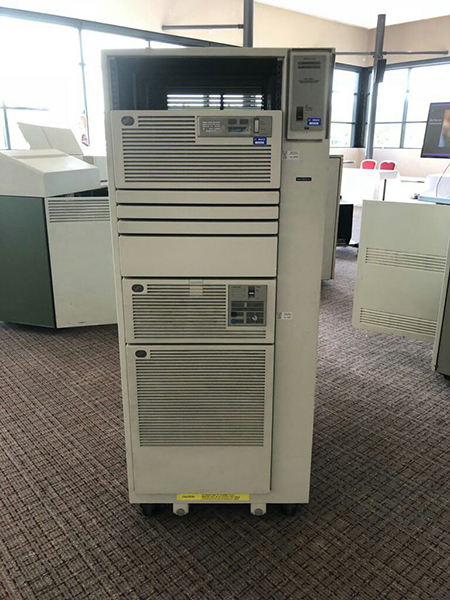
IBM AS / 400 series server, created in 1988
- What computers did you have at home?
- First, the Spectrum, but it did not work out to dock it with the TV (we had a TV without the necessary unit). Then came the "Vector". In the early 1990s, his wife was given at work to develop programs. I bought my first personal when I started working at a bank - money appeared only then.

Computer "Vector-06Ts", model 1986
- What was the "Vector"?
- It seems that it was based on the same processor as the Spectrum. The display is already graphic, keyboard. I remember my wife was developing a program for teaching a ten-finger typing. A keyboard was displayed on the screen, a key was lit on which to press, and a bomb was falling from above. It was necessary to have time to press before the bomb exploded. At first, the bombs on two keys, then on 4, 5, 6, 8. In the end, the whole keyboard was connected. It was necessary to have time to press the desired key without looking. Such a game for learning.
- Other games remember?
- I remember the games only on the first personalities - EU-1840, EU-1841 (our analogues are IBM PC). They had Tetris, three-dimensional Tetris. Later I loved Doom.
- Did you help your wife in her homework with Vektor?
- Once she received a task, and there was little time to write and debug a program. And at that time I still had access to the EU computer. Therefore, I developed a compiler of the source text of vectors programs for the EU computer into machine code and an interface for transferring this data to a standard tape cassette. At work, broadcast, recorded, at home we could debug and watch how the program works on "Vector". All this is due to the fact that I have practically no work on the EU computer. The car was idle, and nobody bothered me.
- Do you regret that now the machines are different, otherwise the process is built?
- Of course not. Modern computers are much more interesting, young people are engaged in projects that I do not even understand. Lectures, conferences with a huge number of people.
In our time, this was not.
Source: https://habr.com/ru/post/458572/
All Articles